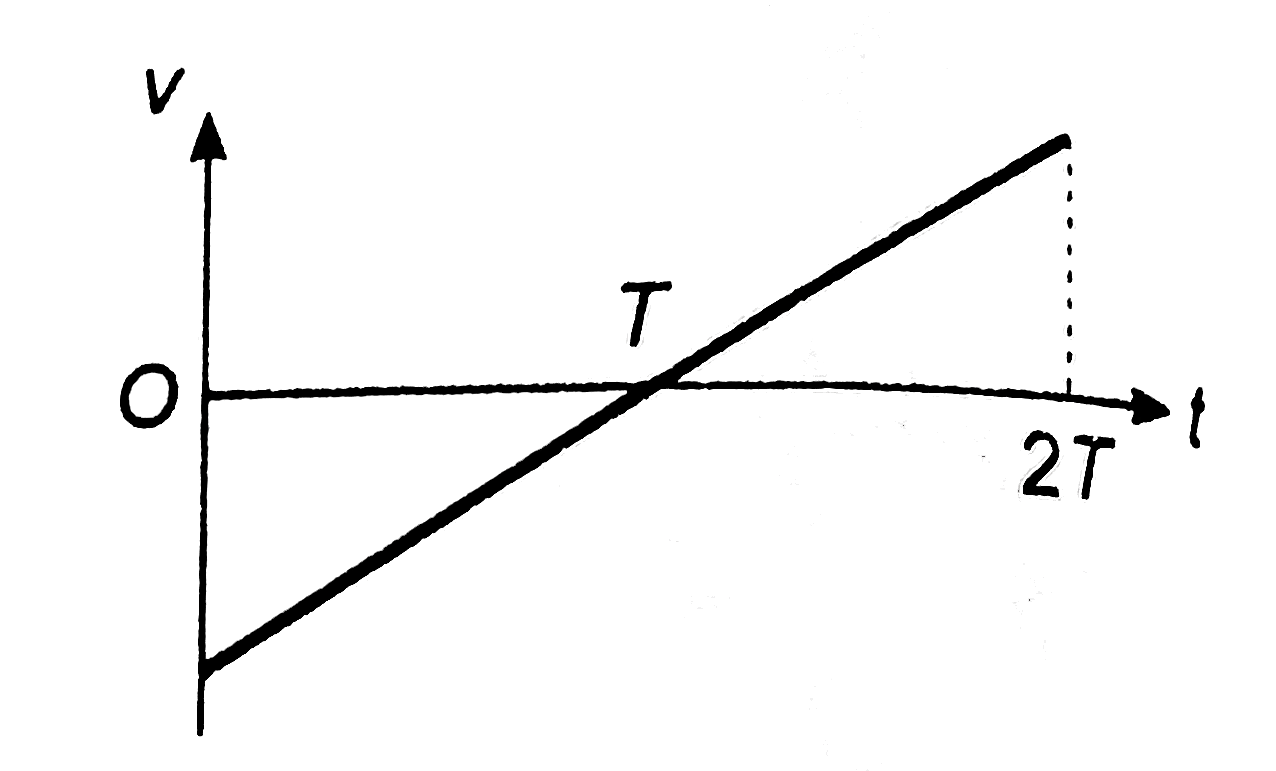The velocity (V) of a particle (in cm/s) is given in terms of time (t) in sec by the equation V=at+bc+t. The dimensions of a, b and c are
L2 , T , LT−2
LT2 ,LT ,L
LT−2, L, T
L, LT, T2
The correct Answer is:C
To solve the problem, we need to determine the dimensions of the constants a, b, and c in the equation for velocity V=at+bc+t.
1. Identify the dimensions of velocity:
- The dimension of velocity V is given as (V)=LT−1, where L represents length and T represents time.
2. Analyze the term at:
- The term at must also have the same dimensions as velocity.
- The dimension of time t is (t)=T.
- Therefore, the dimension of a can be expressed as:
(a)(t)=(V)⟹(a)⋅T=LT−1
- Rearranging gives:
(a)=LT−1T=LT−2
3. Analyze the term bc+t:
- The term c+t must also have the dimension of time since t has the dimension T.
- Thus, the dimension of c must be the same as that of t:
(c)=T
4. Determine the dimensions of b:
- The term bc+t must also have the same dimensions as velocity, which is LT−1.
- Since c+t has the dimension T, we can write:
(b)(c+t)=(V)⟹(b)T=LT−1
- Rearranging gives:
(b)=LT−1⋅T=L
5. Summarize the dimensions:
- We have found the following dimensions:
- (a)=LT−2
- (b)=L
- (c)=T
Final Answer:
- The dimensions are:
- a:LT−2
- b:L
- c:T
- The dimension of velocity V is given as (V)=LT−1, where L represents length and T represents time.
- The term at must also have the same dimensions as velocity.
- The dimension of time t is (t)=T.
- Therefore, the dimension of a can be expressed as:
(a)(t)=(V)⟹(a)⋅T=LT−1
- Rearranging gives:
(a)=LT−1T=LT−2
- The term c+t must also have the dimension of time since t has the dimension T.
- Thus, the dimension of c must be the same as that of t:
(c)=T
- The term bc+t must also have the same dimensions as velocity, which is LT−1.
- Since c+t has the dimension T, we can write:
(b)(c+t)=(V)⟹(b)T=LT−1
- Rearranging gives:
(b)=LT−1⋅T=L
- We have found the following dimensions:
- (a)=LT−2
- (b)=L
- (c)=T
- The dimensions are:
- a:LT−2
- b:L
- c:T
Topper's Solved these Questions
- UNITS, MEASUREMENTS & ERRORSBOOK - VMC MODULES ENGLISHCHAPTER - UNITS, MEASUREMENTS & ERRORSEXERCISE - Enable
50 Videos
- UNITS, MEASUREMENTS & ERRORSBOOK - VMC MODULES ENGLISHCHAPTER - UNITS, MEASUREMENTS & ERRORSEXERCISE - Efficient
50 Videos
- SYSTEM OF PARTICLES AND ROTATIONAL MOTIONBOOK - VMC MODULES ENGLISHCHAPTER - SYSTEM OF PARTICLES AND ROTATIONAL MOTIONEXERCISE - IMPECCABLE
56 Videos
- WAVE MOTIONBOOK - VMC MODULES ENGLISHCHAPTER - WAVE MOTIONEXERCISE - JEE ADVANCED ARCHIVE LEVEL 2 (TRUE FALSE TYPE)
4 Videos
Similar Questions
The velocity v of the a particle depends upen the time t according to the equation v=a+bt+cd+1 Write the dimension of a, b,c and d.
View SolutionThe velocity υ of a particle depends upon time t, according to the equation υ=a+bt+cd+t Write the dimensions of a,b,c, and d.
View SolutionForce F is given in terms of time t and distance x by F=AsinCt+BcosDx. Then the dimensions of A/B and C/D are
View SolutionForce F is given in terms of time t and distance x by F=AsinCt+BcosDx. Then the dimensions of A/B and C/D are
View SolutionThe velocity v of a particle at time t is given by v=at+bt+c, where a, b and c are constants. The dimensions of a, b, c are respectively :-
View SolutionThe velocity 'v' of a particle moving along straight line is given in terms of time t as v=3(t2−t) where t is in seconds and v is in m/s.
The distance travelled by particle from t=0 to t=2seconds is :
View SolutionThe velocity 'v' of a particle moving along straight line is given in terms of time t as v=3(t2−t) where t is in seconds and v is in m/s.
The speed is minimum after t=0 second at instant of time
View SolutionThe velocity 'v' of a particle moving along straight line is given in terms of time t as v=3(t2−t) where t is in seconds and v is in m/s.
The displacement of aprticle from t=0 to t=2 seconds is :
View SolutionThe figure shows the velocity (v) of a particle plotted against time (t).

View SolutionThe figure shows the velocity (v) of a particle plotted against time (t).

View Solution
